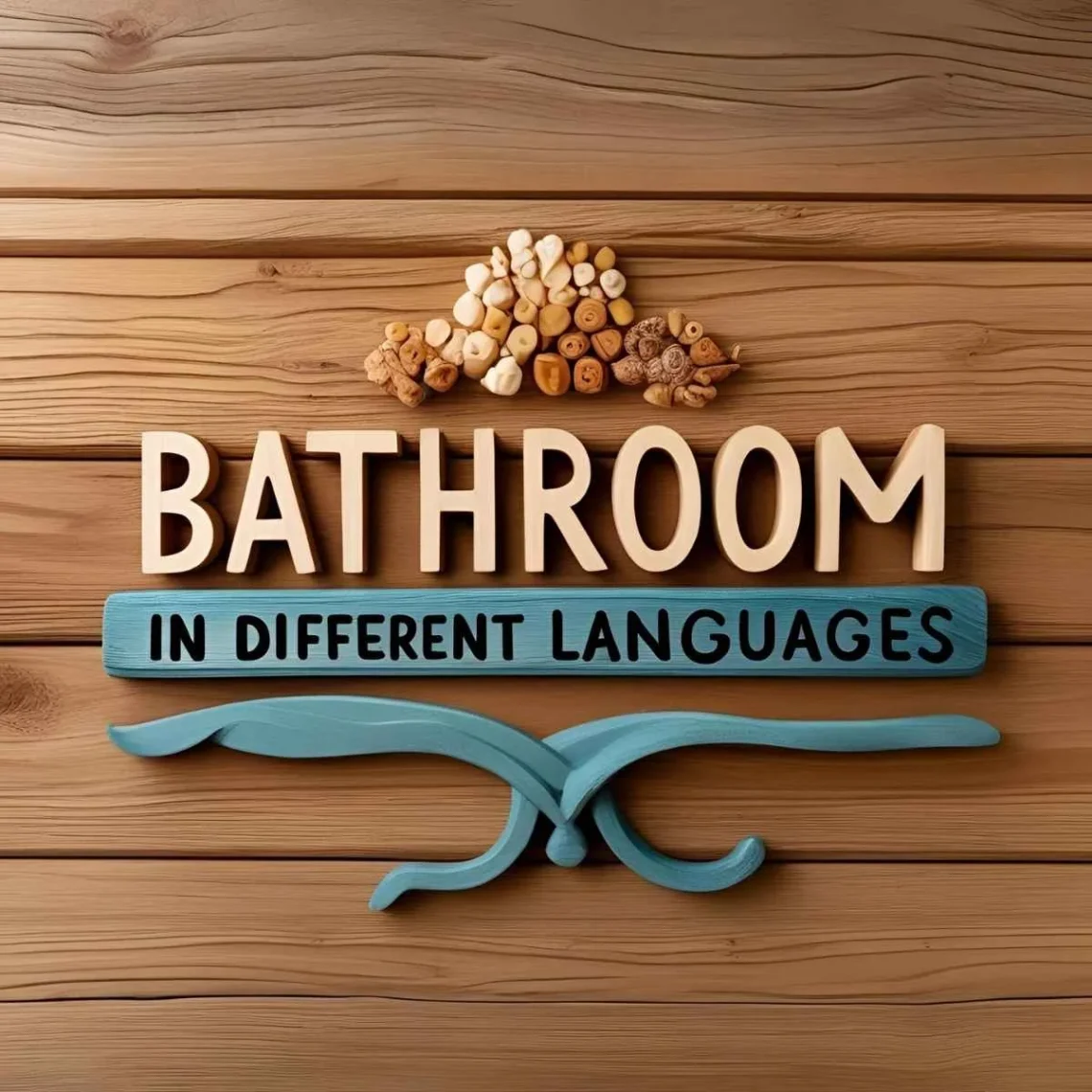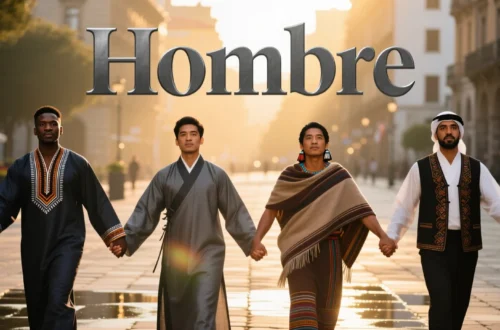Imagine traveling to a bustling market in Marrakech, only to realize you desperately need a restroom but don’t know the local word for it. That moment of urgency, paired with a language barrier, underscores the importance of a simple term: “bathroom.” Across the world, this word carries a universal need, yet each culture shapes it with unique linguistic and social nuances. Whether it’s a sleek facility in Tokyo or a modest outhouse in a rural African village, the term for “bathroom” reflects both practicality and cultural identity. Let’s explore how people across different languages and cultures express this essential concept, revealing the diversity behind a shared human need.
Reference Table: “Bathroom” in Different Languages
| Language | Word/Phrase | Cultural/Linguistic Insight |
|---|---|---|
| French | Salle de bain | Literally “bathroom,” often refers to a private bathing space. |
| Spanish | Baño | Used for both bathroom and bath, emphasizing functionality. |
| Italian | Bagno | Similar to Spanish, used for both bath and bathroom. |
| German | Badezimmer | Means “bathing room,” highlighting its purpose. |
| Mandarin | Wèishēngjiān (卫生间) | Translates to “hygiene room,” emphasizing cleanliness. |
| Hindi | Snaan ghar | Means “bathing house,” often tied to personal cleansing rituals. |
| Japanese | O-furo (お風呂) / Toire (トイレ) | “O-furo” for bath, “toire” for toilet, reflecting distinct spaces. |
| Korean | Hwajangsil (화장실) | Means “grooming room,” often referring to public restrooms. |
| Arabic | Hammam (حمام) | Historically tied to communal bathhouses, now used for bathrooms. |
| Swahili | Bafuni | Derived from Arabic “hammam,” used across East Africa. |
| Zulu | Igumbi lokugezela | Means “washing room,” emphasizing hygiene. |
| Yoruba | Ìwẹ̀ | Refers to bathing spaces, often tied to traditional cleansing. |
| Maori | Wharepaku | Literally “small house,” often used for toilet or bathroom. |
| Hawaiian | Lua | Refers to a toilet or private space, tied to Polynesian simplicity. |
| Cherokee | Gadusi | A term for a washing or cleansing space, rooted in tradition. |
European Languages: Practicality Meets Tradition
European languages reflect a blend of practicality and cultural history in their terms for “bathroom.” For example, in French, “salle de bain” (bathroom) suggests a private space for bathing, often luxurious in Parisian homes. Meanwhile, Spanish uses “baño,” a versatile term for both bath and bathroom, reflecting the language’s straightforward approach. In Spain, you might ask for the “baño” in a café, expecting a basic facility. Similarly, Italian’s “bagno” serves dual purposes, rooted in Italy’s history of grand bathhouses. In contrast, German’s “Badezimmer” (bathing room) is precise, aligning with Germany’s focus on functionality. For instance, a Berliner might describe their “Badezimmer” as a modern, efficient space.
Thus, European terms balance utility with cultural heritage, from the opulent connotations of French to the pragmatic German approach, showing how language reflects daily life.
Asian Languages: Hygiene and Cultural Nuances
Asia’s diverse languages offer unique perspectives on the “bathroom.” For instance, in Mandarin, “wèishēngjiān” (hygiene room) emphasizes cleanliness, a core value in Chinese culture. Public restrooms in Beijing often carry this term, highlighting sanitation. In Hindi, “snaan ghar” (bathing house) evokes India’s ritualistic approach to cleansing, often tied to spiritual practices. Meanwhile, Japanese distinguishes between “o-furo” (bath) and “toire” (toilet), reflecting the cultural separation of bathing and sanitation spaces. A Tokyo resident might relax in an “o-furo” at home while directing a visitor to the “toire.” Similarly, Korean’s “hwajangsil” (grooming room) is commonly used for public restrooms, emphasizing personal care. In Arabic, “hammam,” used across over 20 countries like Morocco and Egypt, recalls historic communal bathhouses, blending tradition with modern usage.
These terms reveal Asia’s focus on hygiene and cultural distinctions, from Japan’s spatial separation to the Middle East’s historical bathhouse legacy.
African Languages: Community and Functionality
African languages often tie the term for “bathroom” to hygiene and community. For example, Swahili, spoken in over 20 countries like Kenya and Uganda, uses “bafuni,” borrowed from Arabic “hammam,” reflecting East Africa’s cultural exchanges. In Zulu, “igumbi lokugezela” (washing room) emphasizes cleanliness, used in South African homes or communal spaces. Similarly, Yoruba’s “ìwẹ̀” refers to bathing spaces, often linked to Nigeria’s traditional cleansing rituals. These terms, spoken across diverse African settings, highlight practical needs while carrying cultural weight, often shared in communal contexts like villages or markets.
Indigenous & Island Languages: Simplicity and Tradition
Indigenous and island languages emphasize simplicity in their terms for “bathroom.” For instance, Maori in New Zealand uses “wharepaku” (small house), often referring to a toilet or basic bathroom, reflecting modest design. In Hawaiian, “lua” denotes a toilet or private space, tied to Polynesian values of simplicity and privacy. Similarly, Cherokee’s “gadusi” refers to a cleansing space, rooted in Native American traditions of purification. In Samoan, phrases like “fale uila” (wash house) reflect the Pacific’s communal approach to hygiene. Across these cultures, from New Zealand to the Cherokee Nation, the term underscores practical yet culturally significant spaces.
Cultural Insights: The Evolution of a Practical Term
The word for “bathroom” has evolved with cultural practices. For example, in ancient Rome, “balneum” referred to private baths, influencing modern European terms like “bagno.” In the Middle East, “hammam” emerged from communal bathhouses, shaping Arabic and Swahili usage. Moreover, in African cultures, terms like “ìwẹ̀” tie to spiritual cleansing rituals, while in Japan, the distinction between “o-furo” and “toire” reflects a cultural emphasis on separating relaxation and sanitation. These words carry historical weight, from Roman engineering to Polynesian simplicity, showing how a practical need is shaped by tradition.
Proverbs and Sayings: Wisdom of Cleanliness
- French: “Propreté est la moitié de la santé.” (Cleanliness is half of health.) Highlights hygiene’s role in well-being.
- Hindi: “Swachhata swasthya ka aadhar hai.” (Cleanliness is the foundation of health.) Ties bathrooms to health.
- Swahili: “Usafi ni afya.” (Cleanliness is health.) Emphasizes sanitation’s importance.
- Japanese: “Kirei na kokoro wa kirei na basho kara.” (A clean heart comes from a clean place.) Links spaces to inner peace.
- Yoruba: “Imọ́tótó jẹ́ ìkọ́bùn.” (Cleanliness is a blessing.) Reflects spiritual purity.
FAQs
Why do some terms for “bathroom” sound similar?
Shared linguistic roots, like Latin’s influence on European languages or Arabic’s impact on Swahili, create similarities.
What’s the oldest term for “bathroom”?
Latin’s “balneum” (circa 1st century BCE) is among the earliest, used for private baths.
How do cultures shape the term’s use?
Some cultures (e.g., Japanese) separate bathing and sanitation, while others (e.g., African) tie bathrooms to communal or spiritual practices.
Conclusion
From “baño” in Spain to “wèishēngjiān” in China, the term for “bathroom” reflects a universal need shaped by cultural lenses. Each word, whether the ritualistic “snaan ghar” in Hindi or the simple “lua” in Hawaiian, reveals how people meet a basic human need with unique traditions. Consequently, these terms connect us through shared experiences, from hygiene to heritage. How do you say “bathroom” in your language, and what does it reveal about your culture? Share your thoughts below—we’d love to hear your stories!






